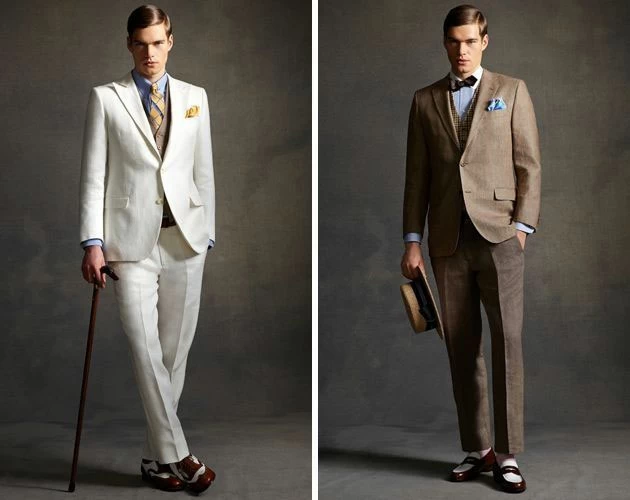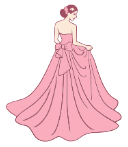
Men’s fashion has evolved in unique ways over the decades, influenced by cultural trends, societal standards, and individual expressions. Throughout history, men’s fashion has been influenced by several historical periods, ranging from the refined clothing of the Victorian era to the easy elegance of modern streetwear. This article examines the historical progression of the major trends that have shaped the always-evolving field of menswear.
1. Victorian Elegance and Formality
Formality and extravagance defined men’s dress during the Victorian era (1837–1901). Fitted jackets, waistcoats, and pants were typical of tailored suits, which symbolized the dignity and elegance of a gentleman. Wool and tweed were popular fabrics that radiated refinement and richness. Accessory pieces like walking canes, top hats, and pocket watches finished the appearance and gave each ensemble a refined touch.
2. The Roaring Twenties and Jazz Age Rebellion
The bright spirit of the Jazz Age drove a seismic shift in men’s fashion during the 1920s. With the rise of the famous flapper look for women and the acceptance of casual clothing for men, the era welcomed a more carefree and adventurous attitude to dressing. Men’s tailoring was completely transformed with the arrival of the sack suit, which was distinguished by its softer shoulders and looser design. In the meantime, the rebellious appeal of the time was embodied by accessories like suspenders and fedora hats, which reflected the newly discovered freedom of speech.
3. The Golden Age of Hollywood and Classic Glamour
In the post-World War II era, men’s fashion had a revival of classic glamor and elegance, due to Hollywood’s golden age of design. With their immaculately fitted suits, sharp dress shirts, and polished leather shoes, movie stars like Humphrey Bogart and Cary Grant personified timeless elegance. Wide ties and double-breasted jackets, conveying an air of sophistication and strength, became extremely fashionable. Clean lines and subdued richness were hallmarks of this era’s return to traditional masculine fashion.
4. The Swinging Sixties and Countercultural Revolution
Men’s fashion saw significant transformation and innovation during the 1960s, fueled by the growth of youth subcultures and the cultural revolution. With its striking patterns, fitted suits, and Chelsea boots, the mod style became iconic, embodying a spirit of rebellion and youth. In the meantime, the hippie movement adopted a more carefree and eclectic style, making bell-bottom pants, fringe jackets, and tie-dye shirts stand in for an anti-establishment mindset. High fashion and street style came together in this era, setting the stage for the varied trends of the following decades.
5. The Disco Era and Glamorous Excess
The disco era of the 1970s was known for its showy and extravagant approach to fashion, which included exaggerated silhouettes, vivid colors, and shimmering fabrics. Men began wearing platform shoes, wide-legged pants, and form-fitting blouses, and disco clubs became the place where they experimented with fashion. Icons like David Bowie and Elton John had a ubiquitous influence, encouraging a generation to accept uniqueness and use clothes as a means of self-expression. Every disco outfit was elevated with accessories like bold jewelry and huge sunglasses that captured the essence of the time.
6. The Minimalist Movement and Casual Chic
Men’s fashion underwent a transition in the late 20th century toward casual sophistication and minimalist aesthetics, driven by the 1990s tech boom and the emergence of streetwear culture. Modern masculinity was redefined by designers such as Giorgio Armani and Calvin Klein, who promoted modest elegance, neutral tones, and clean lines. The distinction between high fashion and regular wear became increasingly hazy as sneakers, bomber jackets, and denim jeans gained enormous appeal. Men were encouraged to exhibit their particular style in understated yet elegant ways throughout this era that appreciated comfort and versatility.
7. Contemporary Streetwear and Urban Cool
Urban lifestyle and the advent of contemporary streetwear have influenced men’s fashion in recent years. Streetwear has become a global phenomenon due to brands that have blurred the lines between fashion, art, and lifestyle. Sneakers, graphic T-shirts, and hoodies have become wardrobe mainstays, expressing a hip and trendy aesthetic. Accessories like the versatile sling bag, which seamlessly integrates elegance and functionality, have become vital for the modern man on the go. Men have countless options to exhibit their originality and uniqueness through their choice of clothes and accessories in this era that values individuality and self-expression.
Conclusion
Men’s fashion has changed over time, demonstrating how style and self-expression are ever-evolving concepts. Every historical era has had a lasting impact on how men dress and carry themselves in public, from the polished elegance of the Victorian era to the modern cool of streetwear culture. One thing about fashion that never goes out of style is its ability to capture individuality, goals, and the spirit of the moment.
Keep an eye for more latest news & updates on Glamour Tribune!
